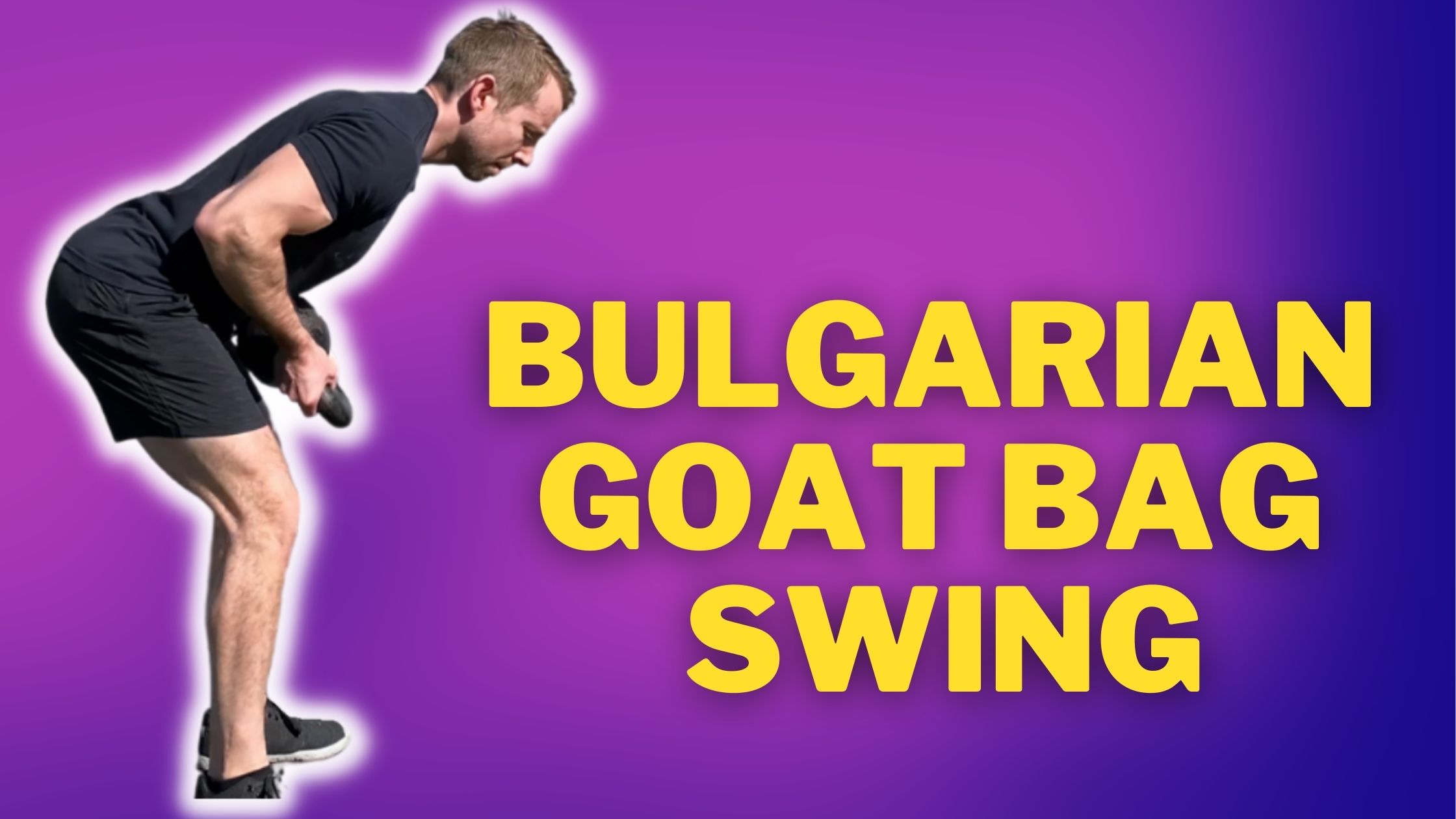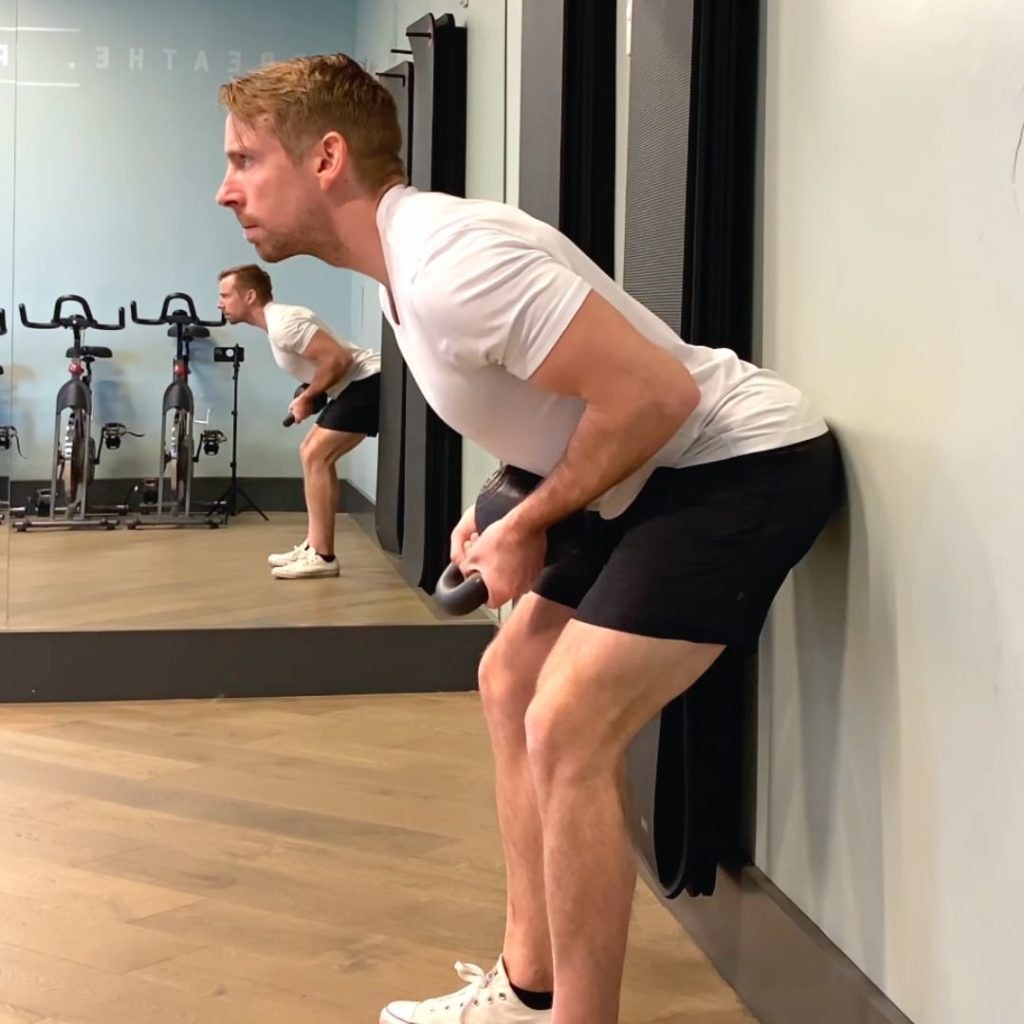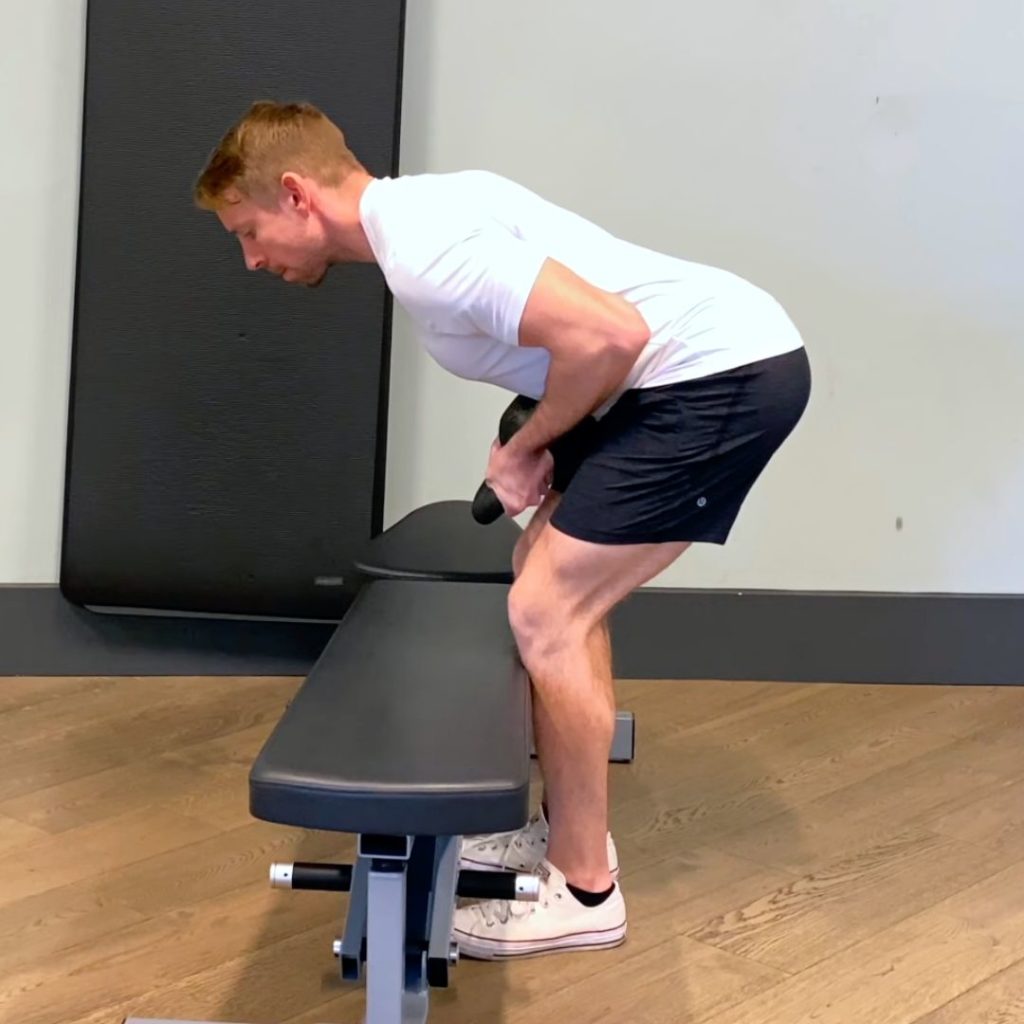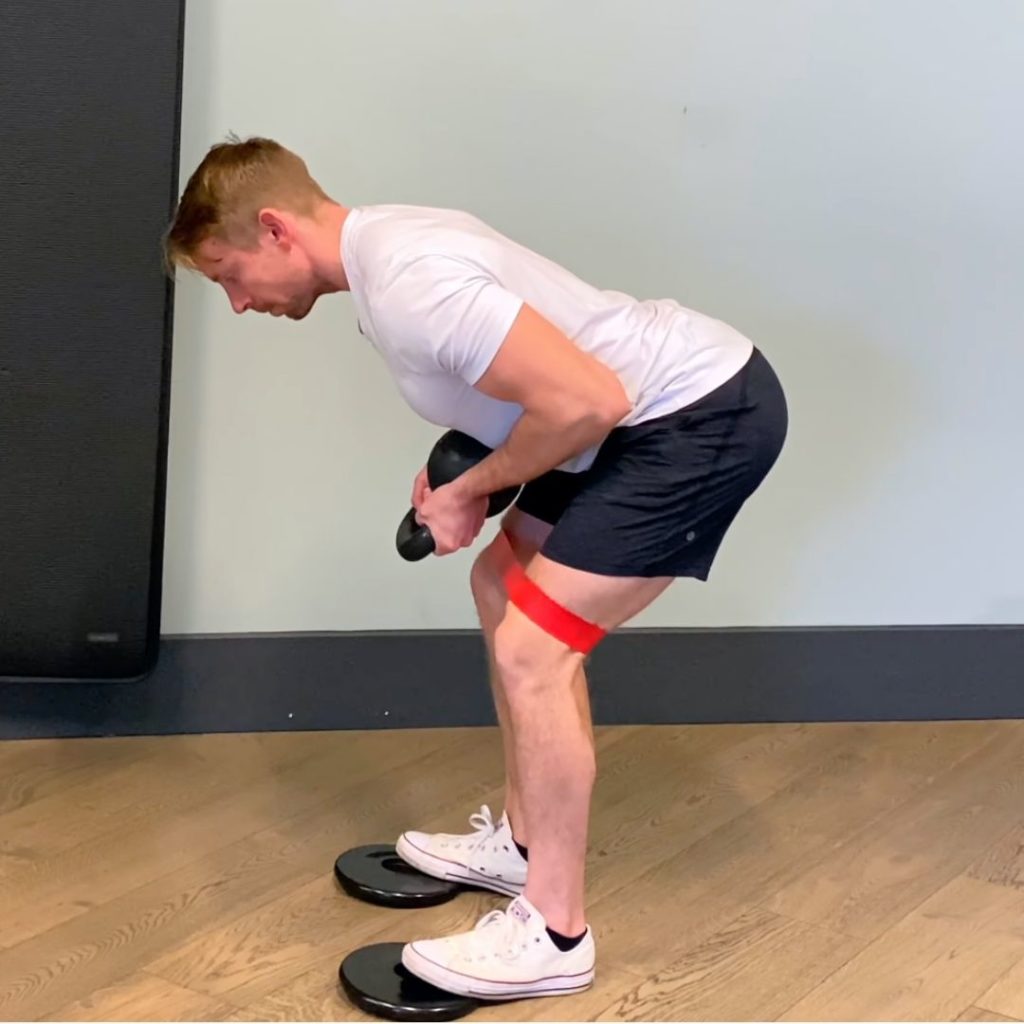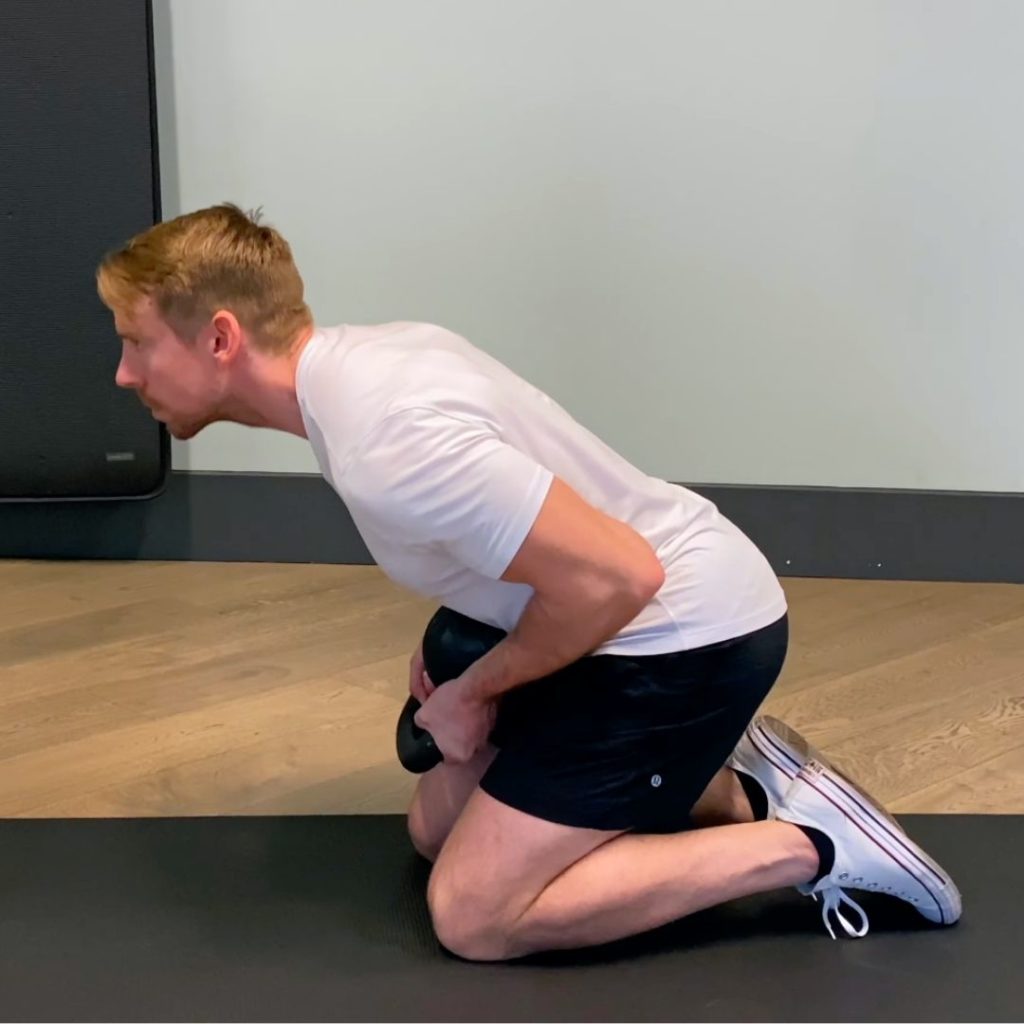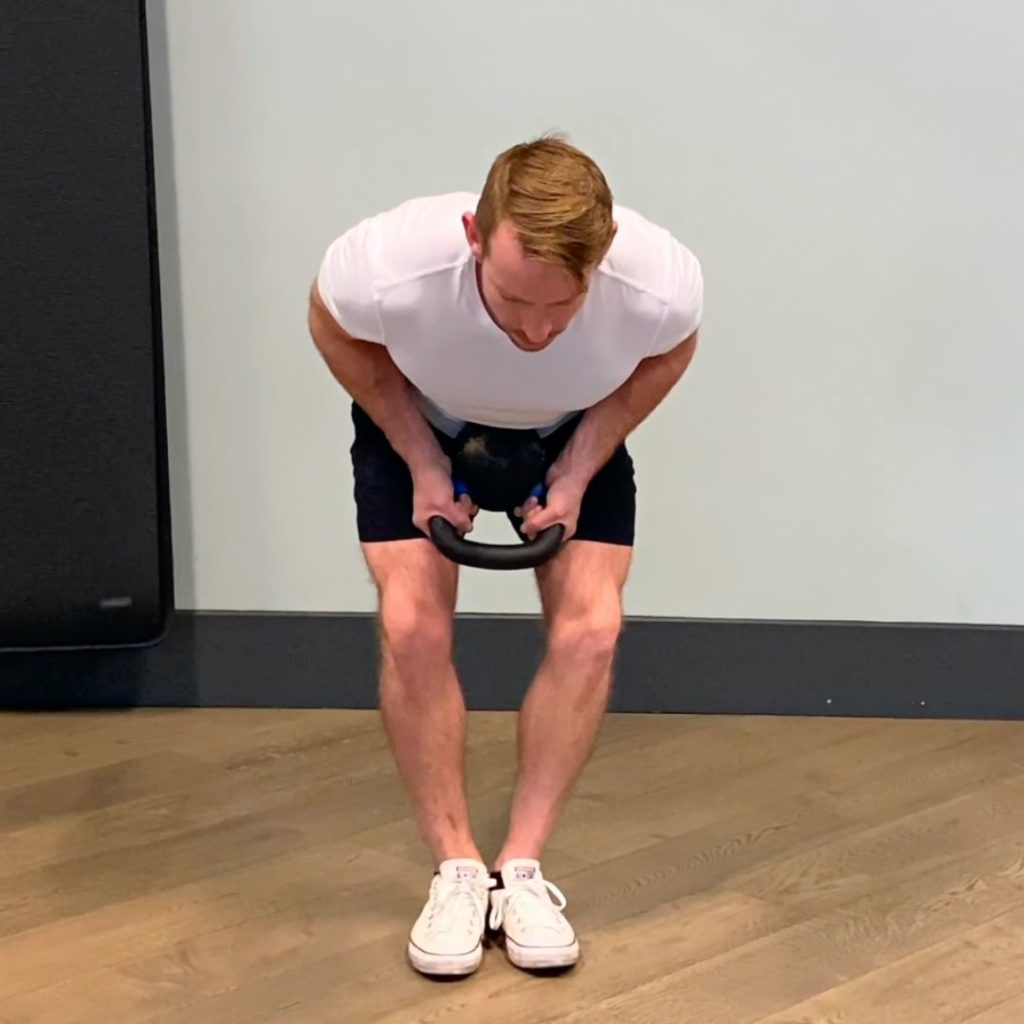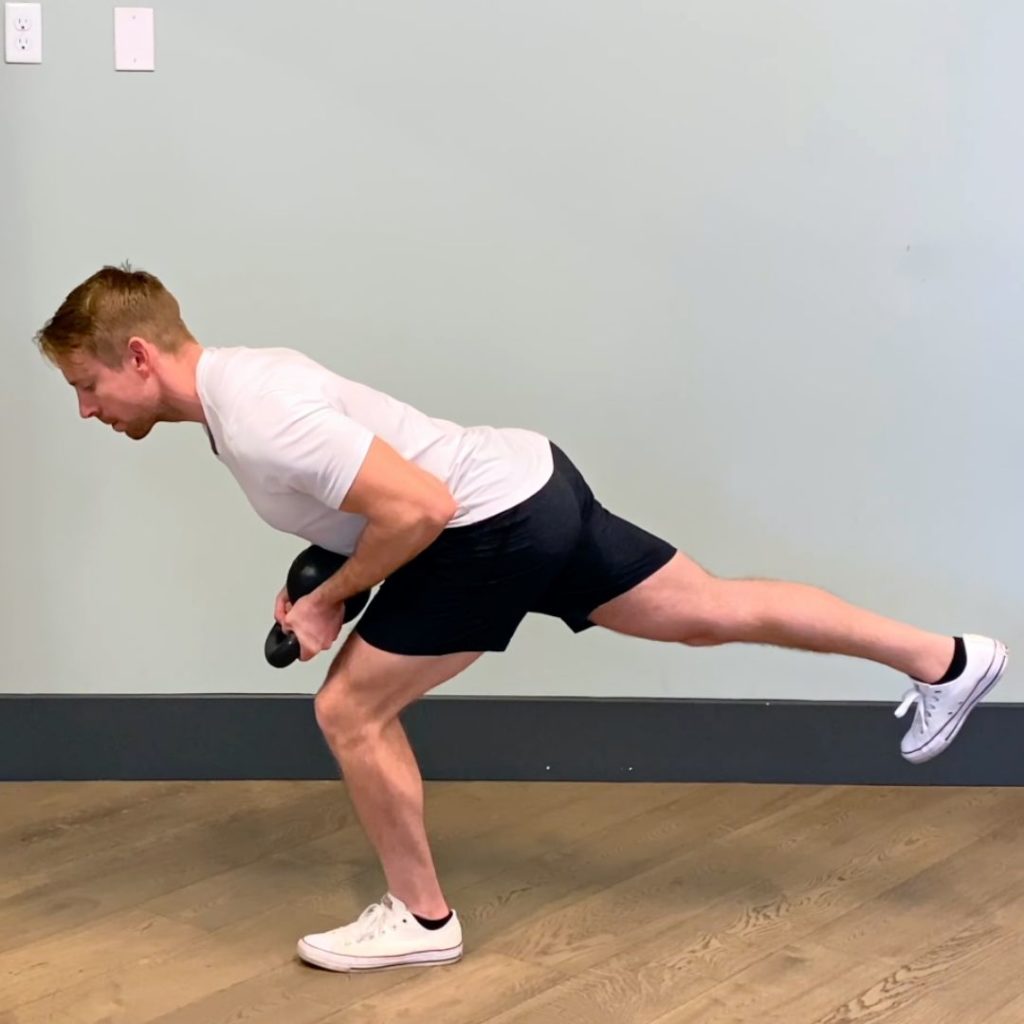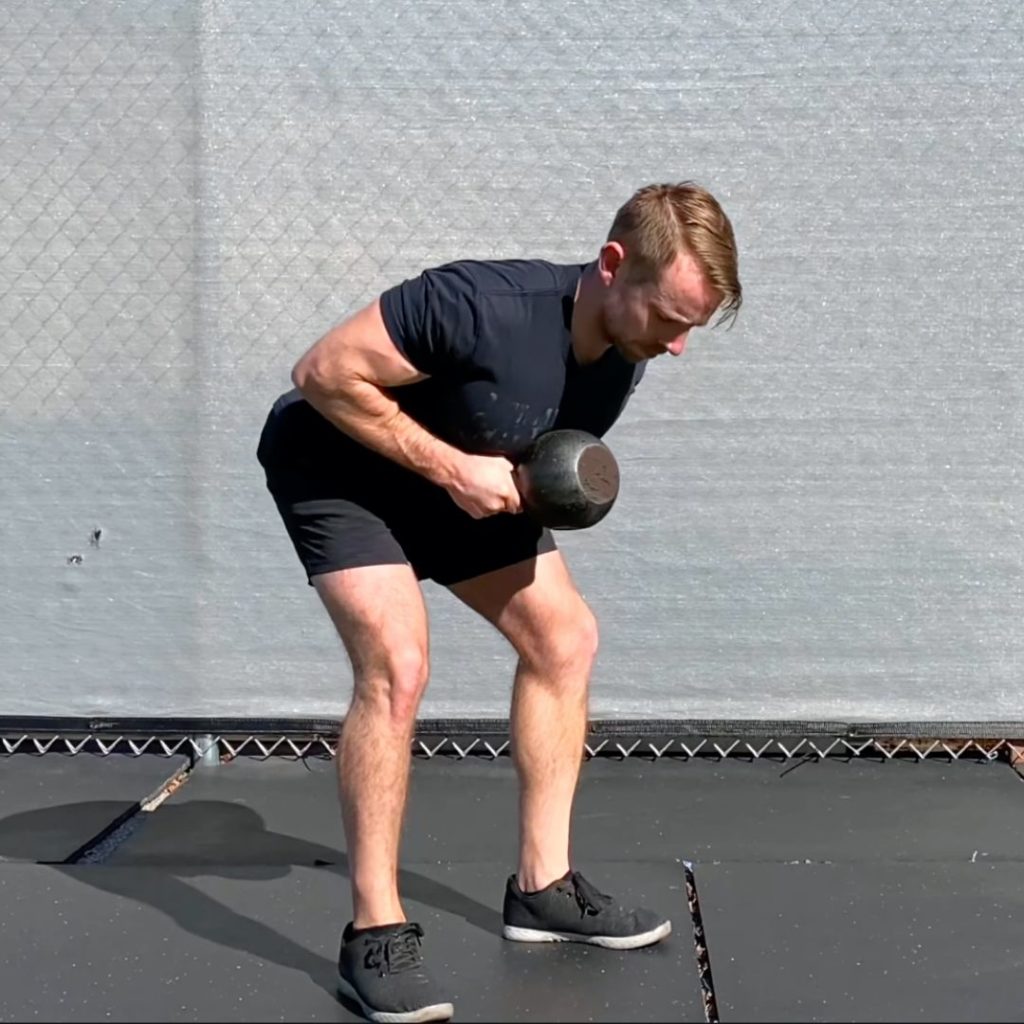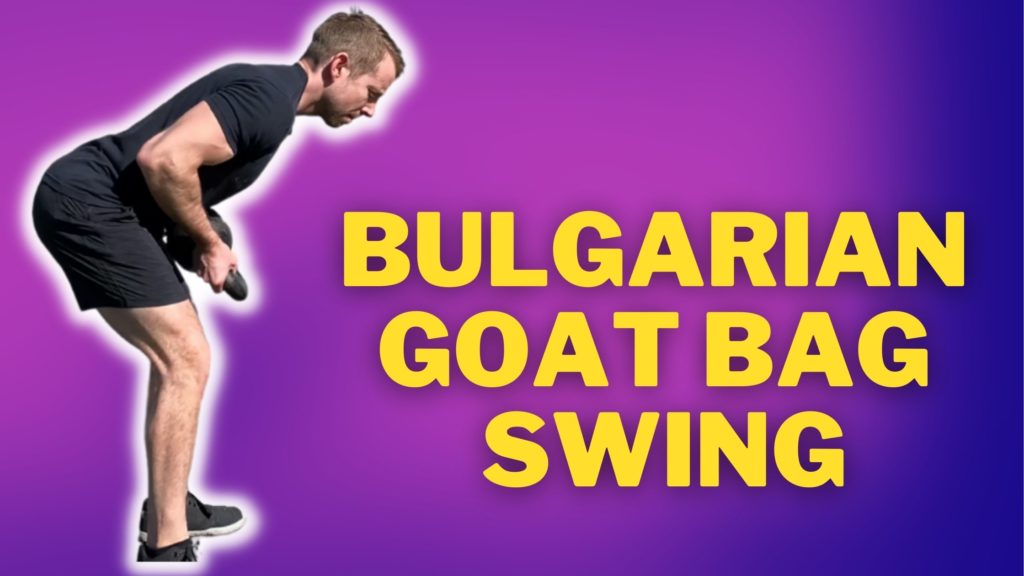
This goofy sounding exercise could be the missing link in your kettlebell workouts.
Developing a strong, consistent hip hinge should be a top priority for new lifters.
The hinge is the key to unlocking your strength potential in any fitness or performance endeavor, not just kettlebell training.
A good hip hinge properly engages the hamstrings and glutes in big exercises like the deadlift and kettlebell swing (giving you more power) and it also protects your low back from the aches and pains that often creep in with those exercises.
Before diving into the ballistic kettlebell lifts (swings, cleans, snatches), a smart lifter will take plenty of time training with the slow lifts to ingrain the optimal hip hinge pattern.
The deadlift is the obvious place to start but there is another, often overlooked, progression that can help us get to hip hinge mastery…
The “Bulgarian Goat Bag Swing.“
Like the goblet squat, this is another exercise invented and popularized by coach Dan John and the story goes that he gave this move a crazy name as an unofficial trademark of sorts to keep people from plagiarizing his ideas.
Now that I’ve given credit where credit is due, I will sometimes refer to this exercise simply as the belly hinge.
Bulgarian Goat Bag Swing Proper Form
The belly hinge looks much like the deadlift or kettlebell swing – the butt travels back, the knees bend slightly, feet stay rooted, and the spine remains neutral.
The obvious difference is how and where you hold the kettlebell which offers a few key training advantages.
You’ll grip the horns of the handle much like a goblet squat and push the bottom of the bell into the top abdominal area.
Inhale through the nose and brace the abs against the kettlebell.
As you hip hinge, think of the arms as performing an isometric row – the elbows are actively driving back while the shoulders are pulled down with the lats.
Taken together, this core and upper back engagement keeps the spine in strong alignment.
The goal with this and any hip hinge drill is to find that sweet spot where your hamstrings feel stretched while the feet remain rooted and balanced. Squeeze the glutes back into a strong lockout, being mindful to not to over-extend the hips.
You want to avoid folding – where the torso simply collapses forward without the simultaneous backward travel of the hips.
To that end, here are some more technical cues and variations to help you master the hinge.
Wall Tap Hip Hinge
The wall tap is a classic way to drill the hip hinge pattern. Simply take a small step away from a wall, feet at hips’ width, and push back until your butt makes contact with the wall.
Bench Block
To keep the hinge from turning into a squat, stand in front of a bench or step preventing the knees from shifting forward.
Dan John’s “Magic Drill“
Another gem from Dan John’s coaching toolbox is what he calls the Magic Drill.
Place a band around the legs, just over the knee line. Elevate your toes on small weight plates.
Perform the hinge as usual while pushing the knees out against the band. These two additions will really help you find your hamstrings and make it obvious when you’re folding the torso.
Kneeling Hip Hinge
Try out the tall kneeling hinge to simplify the technique or if you feel your low back fatiguing. By removing the need for ankle and knee control, you can really hone in on the feeling of hip extension and glute squeeze.
Narrow Stance Hip Hinge
Most kettlebell work keeps our feet at hip’s width or wider. I like to train in a variety of stances and the belly hinge allows us to do just that. See how your hinge feels with a more narrow stance, working all the way in to heels touching.
Single Leg Deadlift
This belly position can also be applied to create one of my favorite variations on the single leg deadlift.
Bottoms-Up Kettlebell Hinge
Finally, you can perform all of these drills in a higher position – by actually holding the kettlebell bottoms-up at chest height.
Try this position if your grip or low back fatigues.
What Size Kettlebell To Use?
If you’re a new kettlebell lifter or otherwise using the belly hinge as a warm-up, I’d suggest staying on the light side – 12 to 16 kg should be just fine for most people.
Of course, if you’re more experienced and maybe using this exercise as a substitute for the swing, feel free to go heavier but eventually your grip will become a limiting factor.
Bulgarian Goat Bag Swing Workout
Here’s a “fun” workout from Dan John – The Butt Blaster 5000.
You’ll perform 10 Bulgarian Goat Bag Swings followed by 10 Goblet Squats.
Then 9 reps of each, then 8 reps of each, and so on down to 1 rep of each without putting the bell down.
That’ll burn your biscuits.
In Conclusion
The Bulgarian Goat Bag Swing is a simple exercise but also a very powerful tool for mastering the hip hinge and progressing to the kettlebell swing.
That’s exactly why the Goat Bag Swing is featured in the Kettlebell Foundations training program.
Just a little practice guarantees your kettlebell swings will fly with more power while keeping your back strong and happy.
